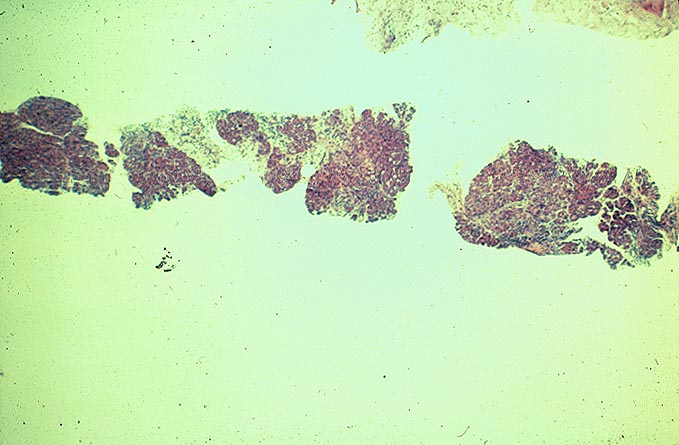
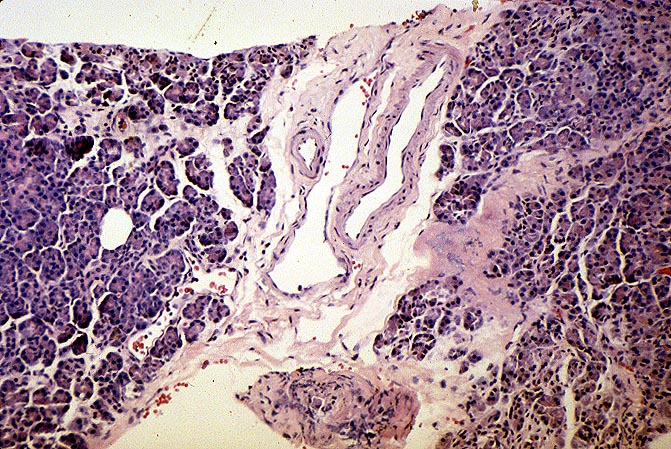
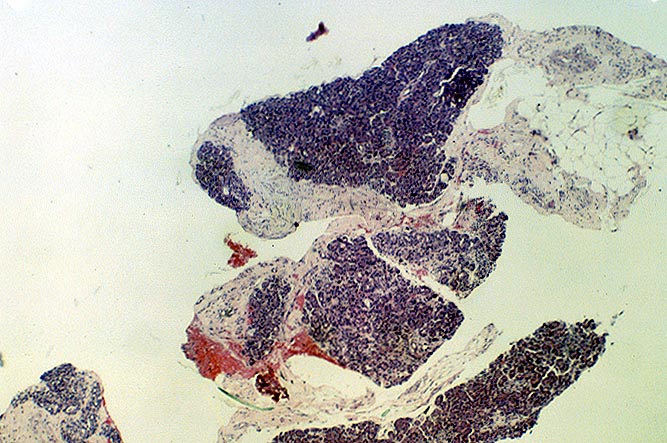
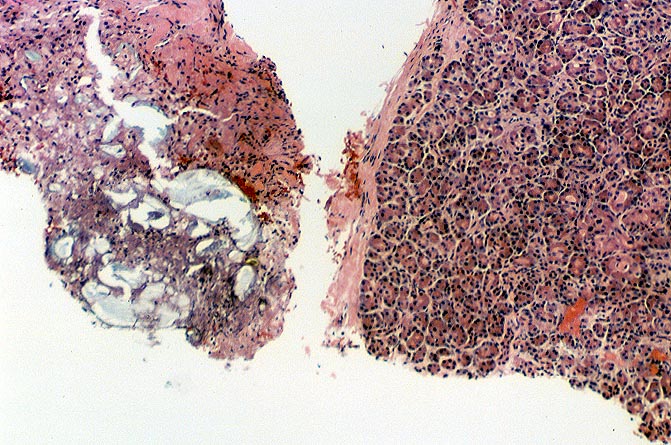
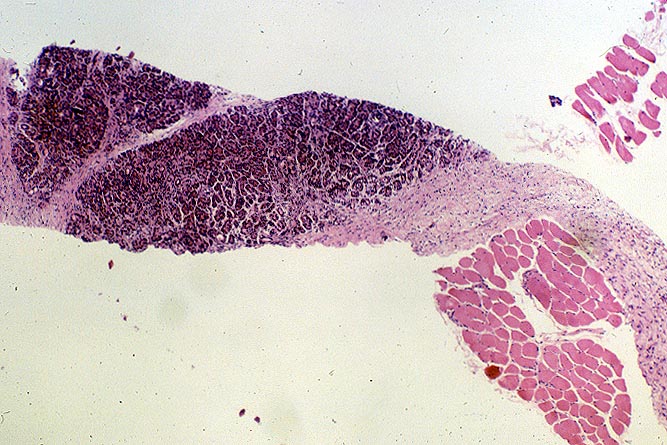
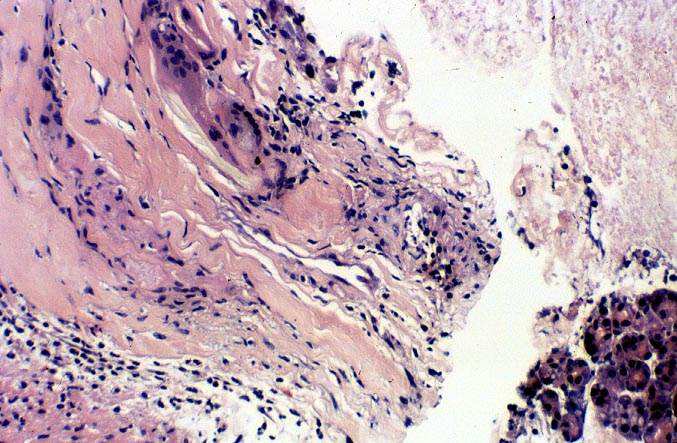












Diagnosis and Grading of Acute Allograft Rejection
The experience with needle biopsies of transplanted pancreas is small in comparison to other solid organ transplants. With the development of the percutaneous technique, the examination of pancreas graft tissue samples has become routine. The list of differential diagnoses in pancreas biopsies is similar to other organs and includes: rejection, non-specific acute and chronic pancreatitis, viral infections such as CMV and EBV, ischemia, and obstruction. Some of these processes may present with typical features that make the pathological diagnosis clear. In many cases the morphological changes are subtle or there is overlap between one pathological process and another.
In a similar fashion as it is seen in unmodified acute allograft pancreas rejection in laboratory animals, the inflammation in the early stages of rejection appears to be localized to the septal areas with accentuation around small veins and capillaries and associated venous endotheliitis. Latter there is inflammation involving the acinar parenchyma and ducts.
Arterial involvement is characteristic of the higher grades of rejection. Sampling variations affect the ability to observe the arterial lesions. Also due to sampling, arteritis can be seen in the presence of mild septal and acinar infiltrates. Acinar necrosis is suggestive of vascular rejection even in the absence of arteritis.
REFERENCES
